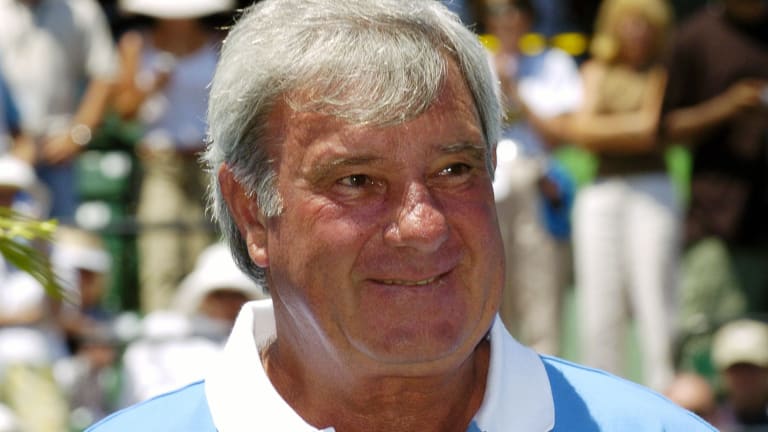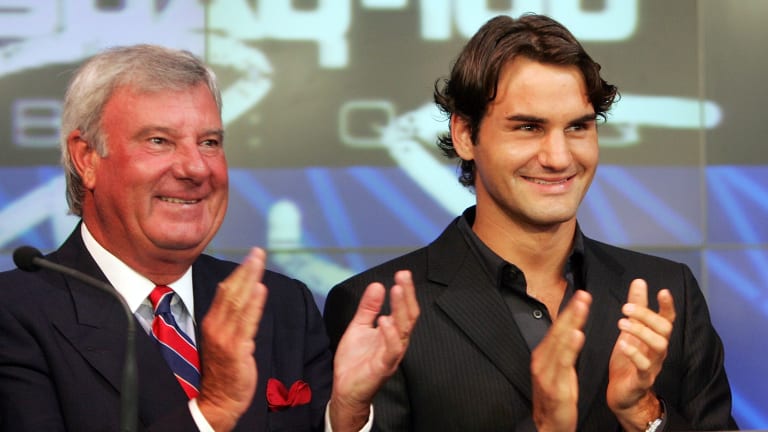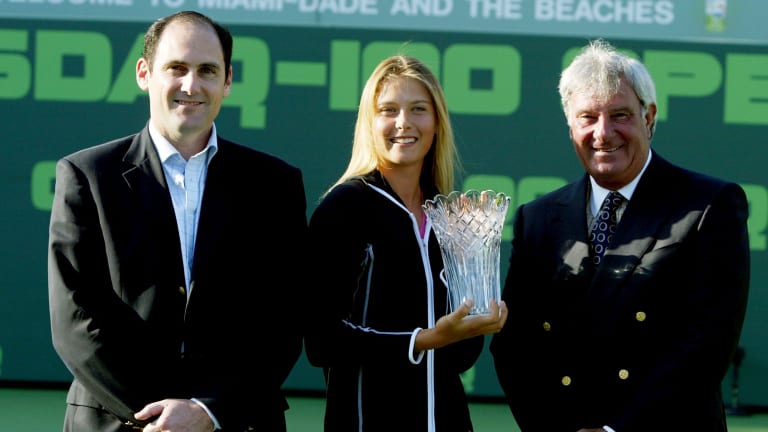Speaking recently about his old friend and longtime professional colleague Butch Buchholz, fellow Hall of Famer Cliff Drysdale got to the essence of as multi-faceted a man as tennis has ever known. Drysdale said, “Butch has always been there for the game. He has done so many things in tennis. He has great instincts about the future of the sport and has always had a sense about how things would turn out, largely because of his excellent leadership. Butch was continuously in the forefront of the game. He has received a lot of accolades for everything he has done, but not enough in my view. He was always thinking about improving tennis, and he still is.”
Drysdale started crossing paths regularly with Buchholz in the 1960’s when they were both members of the esteemed “Handsome Eight” who got World Championship Tennis (WCT) off the ground. Buchholz grew up in St. Louis. He was an outstanding junior competitor, winning the French, Wimbledon and U.S. National 18 titles in 1958, taking the Australian juniors in 1959. He was ranked third among American men in 1960, reaching the quarterfinals of Wimbledon before retiring with an injury when leading Neale Fraser two sets to one with the fourth set locked at 15-15. Buchholz had five match points before losing. That could well have been his year at the shrine. In 1959 and 1960, he played Davis Cup for the United States.
Buchholz turned pro after that 1960 season, won the prestigious U.S. Pro Championships in 1962, joined the “Handsome Eight” in 1967 and played on into the Open Era before concluding his career after reaching the quarterfinals of the 1969 US Open and playing sporadically with injuries in 1970. As he told me recently, “If I knew I was going to have to wait eight years for Open Tennis, I would never have turned pro when I did. I thought it was around the corner. But I am proud of the work we did in the sixties to make Open Tennis a reality. In pro tennis we got away from one night stands and started playing tournaments, which gave us more and more recognition. We got the attention of Herman David, who was the Chairman of Wimbledon at the time. He invited eight of us professionals to play our own event at Wimbledon in 1967 and said, ‘I don’t care what the ITF says, you are invited.’ That was a big step in the evolution to Open Tennis. Herman David said if we filled the stadium in 67’ we would be back at Wimbledon in 68’ with Open Tennis, and that is what happened.”
Buchholz was a much better craftsman than many people realize. As his old friend and fellow player, promoter and Hall of Famer Charlie Pasarell told me, “Butch was one hell of a player. He would have won Wimbledon in 1960 if he had not hurt himself. Butch hit the ball very flat, an inch over the net so to speak. His groundstrokes were great and he was a good volleyer. He hit the ball as aggressively as anybody and could blow you off the court. He was also very quick.”


